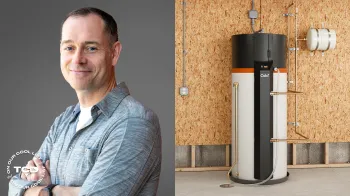A Penn State research team has discovered a more eco-friendly way to mine lithium that involves fewer chemicals and a notable reduction in planet-warming pollution compared to traditional methods.
By utilizing electric current and hydrogen peroxide, the researchers were able to extract lithium from spodumene ore in a way that reduces costs by 35.6% and lowers carbon dioxide pollution by 75.3% over the methods currently employed in the industry, according to a report shared by TechXplore.
Electric vehicles primarily rely on lithium-ion batteries for power, and they accounted for approximately 80% of the market's demand in 2024. Statista projects that global demand will increase sevenfold by 2030, which means we need to reduce the impact lithium extraction has on the environment.
One of the two primary extraction techniques involves pumping lithium-rich brine from underground aquifers to the surface. It's then left to evaporate and be processed with chemicals to achieve saleable lithium solids.
This method uses a high volume of local water resources and occupies large areas of land for the evaporation process, which is then rendered inhospitable for plant growth, as the report detailed. Excessive energy use and chemical runoff are also a worry for these operations.
Alternately, traditional mining techniques require incredibly high temperatures for processing the ore, as well as chemicals to make the extraction of the lithium possible. Mines are known to impact habitats and disrupt ecosystems, as well as produce toxic byproducts.
Watch now: Giant snails invading New York City?
"Extracting lithium from brine requires you to wait for the water to slowly evaporate, you cannot control how fast you produce the salt, and you can only generate more by increasing the surface area—so more salt ponds and more adverse effects," as Feifei Shi, an assistant professor of energy engineering at Penn State, offered in the piece.
"However, with our method we can add as much spodumene as we want and simply increase the electrical current to generate, or accelerate, the leaching reaction."
By using electrical current, they were able to excite electrons in the mineral in order to free some lithium ions, but the addition of hydrogen peroxide facilitated a more efficient transport of electrons. This resulted in an observed 92.2% efficiency, which rivals the other more polluting methods.
|
If you were going to purchase an EV, which of these factors would be most important to you? Click your choice to see results and speak your mind. |
"We cannot compromise our environment just to produce lithium. The potential of a more sustainable way to create electric vehicles could act as a multiplier and help us achieve net zero emissions," as Shi shared in the piece.
TCD Picks » Quince Spotlight

There's still work to be done, however, before this process can be made into a scalable industrial alternative.
"Leaching is just the first chapter," according to lead author Hanrui Zhang. "We extracted lithium from ores to water, now we need to develop it into solid phase to complete the story."
"We really think this is a revolution," Shi added. "Electrochemistry is going to open the door to a lot of interesting, interdisciplinary research around mining or mineral processing."
Join our free newsletter for weekly updates on the latest innovations improving our lives and shaping our future, and don't miss this cool list of easy ways to help yourself while helping the planet.

















